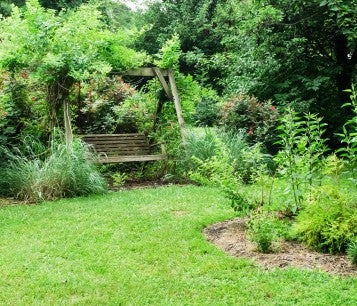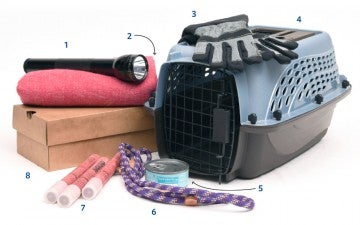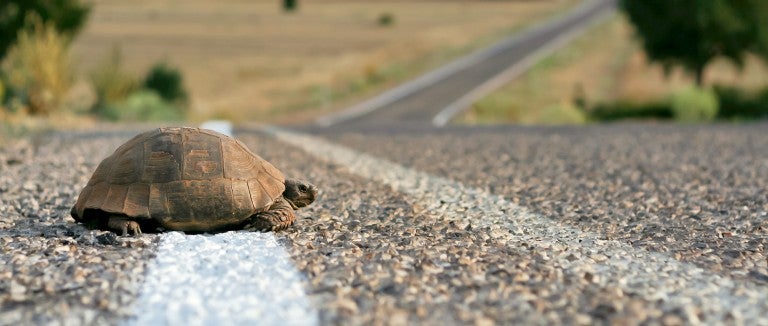The term “roadkill” was coined in the 1940s, according to Merriam-Webster, entering the lexicon alongside “DDT” and other harbingers of a dystopian technological age that runs roughshod over the natural world. In the 1990s, the word became a cheeky insult when a rival called then-House Speaker Newt Gingrich “roadkill on the highway of American politics.”
Nowadays, a hyper-macho online TV show about cars has taken “roadkill” as its namesake. We have roadkill cookbooks, a roadkill coloring book, roadkill cafes featuring “splatter platter” dishes and debates about whether it’s OK to eat roadkill.
The callousness toward dead animals is profoundly insensitive, though not surprising. As a British historian noted, the “hardboiled American term” was reductionist from the start, lumping a breathtaking range of wild creatures into “a non-guilt-inducing, homogeneous mass.”
Each year, according to one commonly cited statistic, vehicles kill 365 million vertebrates in the U.S. That number doesn’t include bees, snails and others without backbones. It also doesn’t account for wildlife in neighboring countries. As I write in early winter, we’re anticipating unusually high snowy owl numbers. But my excitement is tempered by the news that cars have killed three in southern Ontario in a single week. Exquisitely adapted to severe conditions in Arctic breeding grounds, these birds are ill-prepared for the 3-ton steel predators they encounter upon migration.
Ecologists working to connect fragmented habitats face a daunting challenge: In the U.S. alone, more than 4 million miles of roads cut deep wounds into remaining wildlife corridors. “Roads cross over every part of every ecoregion,” says John Griffin, director of the HSUS urban wildlife section, “and every kind of species is impacted.”
Contrary to popular belief, animals dodging cars aren’t stupid or prone to death wishes—getting to the other side is a matter of survival. Toads emerging from hibernation need to return to breeding ponds. Mountain lions searching for mates need to establish territory. Butterflies laying eggs look for plants their caterpillars can digest. Animals seek food, shelter and companionship like we do, but we’re luckier: We don’t have to hoof it across six-lane highways just to get to dinner.
Inhibited movement also leads to genetic isolation and local extinction. Endangered species have little time to lose; vehicles kill dozens of Florida panthers annually, taking out 10 to 25% of the remaining cats. “There are so many interesting species of wildlife out there, and you hardly ever get to see some of them alive,” says conservation scientist Ron Sutherland of Wildlands Network. “You just see them dead on the road.”
“Roads cross over every part of every ecoregion, and every kind of species is impacted.”
John Griffin, The HSUS
Yet concerted efforts to mitigate losses can make a real difference. In the Canadian Rockies, mother bears even teach cubs to use wildlife overpasses, Sutherland notes. Such bridges, along with tunnels and fencing, can reduce collisions by up to 90%.
Most roads lack safe passageways, though, leading not just to population loss but to suffering. Dead animals attract scavengers who can then become victims too, compounding the problem. But by keeping these tips in mind, we can give more animals a chance wherever we drive.
Safety first
It’s hard to help animals if you’re endangering people. A few years ago, a motorcyclist and his daughter died after slamming into a car stopped in the road by a driver rescuing ducklings south of Montreal. Pulling over is better, but vigilance is key: Even wide shoulders are no guarantee, says Griffin, as distracted drivers may swerve into parked vehicles.
A humane backyard is a natural habitat offering wildlife plenty of food, water and cover, plus a safe place to live free from pesticides, chemicals, free-roaming pets, inhumane practices and other threats. And it's so easy to build!

Take the long view
Observe speed limits and constantly scan the landscape. Look for reflective eyes as you head into darkness. If one animal appears, more will likely follow. Skunks and raccoons may have young in tow, so slow down to let families cross. Turn down interior lights; the glow of phones and dashboard distractions “are in a real material way reducing your ability to see down the road,” says Griffin.
Learn behaviors
A zigzagging squirrel isn’t crazy; he’s employing ancient strategies for predator avoidance. “He doesn’t recognize that cars go in a straight line. He still thinks he’s being chased and is trying to get out of the way,” says Griffin. Understanding seasonal activities—such as fall nut-gathering and winter mating—will help you anticipate movement. Bucks also seek mates in winter, increasing risk during periods of heavier traffic and darker roads.
Keep a kit
Heavy wildlife gloves helped Maryland animal advocate Krista Rakovan carry a snapping turtle from the road to safety, while a towel and boot box cradled an injured aquatic turtle en route to a wildlife rehabilitation center. Rakovan’s emergency kit also includes a heavy-duty slip leash for dogs and disposable exam gloves. A flashlight and flares can come in handy, too. “It can be pretty simple, and it just makes you feel prepared,” says Rakovan.

A net, snow shovel or piece of plywood can help gently lift turtles and other animals off the road, but request assistance if you lack experience or strength. Never handle an adult mammal without first consulting a wildlife professional; even small animals can injure you, Griffin cautions. Keep your cellphone updated with numbers for local animal control agencies, veterinary offices, wildlife rehabilitation centers and state agencies, and add a notebook with these numbers to your car kit in case your phone dies.
Read Tips on Helping Injured Wildlife
Make your voice heard
New sensing technologies will detect large animals, but only awareness and compassion saves smaller creatures. Burlington, Ontario, closes a busy road for three weeks during salamander breeding season because, as its mayor told a reporter, “it’s the least we can do for these little guys.” The sentiment is rare among politicians and planners fearing negative reaction to wildlife projects, says Sutherland, so every voice matters: “More people need to speak up about it.”
Want more content like this?
This was written and produced by the team behind All Animals, our award-winning magazine. Each issue is packed with inspiring stories about how we are changing the world for animals together.
Learn MoreSubscribe
